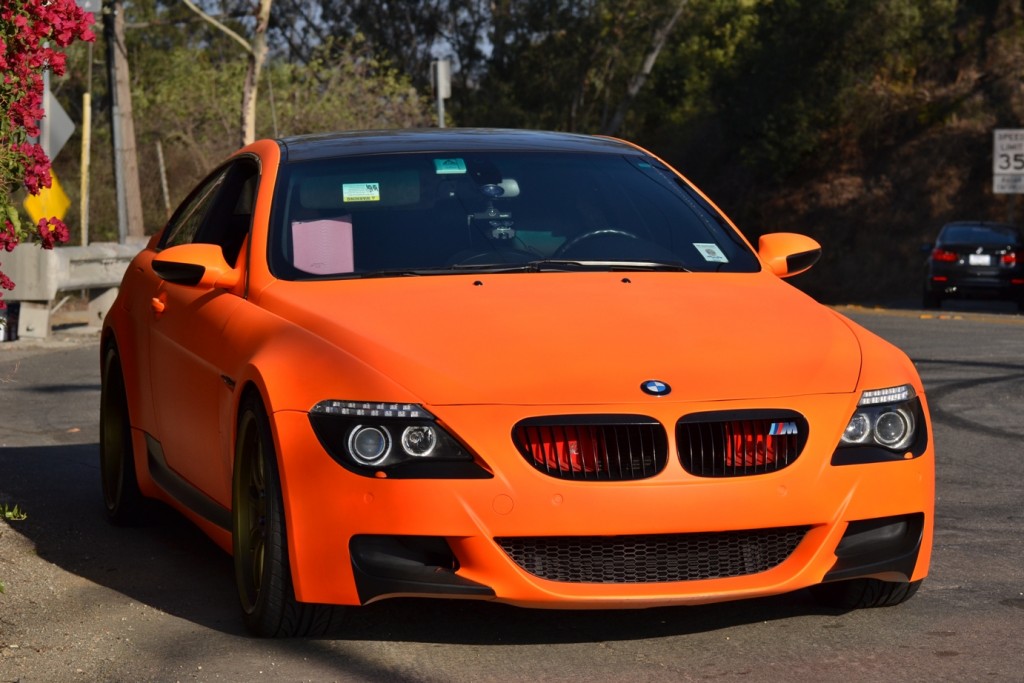Tips
How to use plasti dip
Plasti-Dip Application Tips (for Spray Cans):

Consider practicing on something unimportant first, just to get the hang of it. Something like a light switch cover, a piece of scrap wood, or something lying around in your garage. Clean whatever part you are coating very thoroughly – Start with soap & water, but then use acetone, paint thinner, or nail polish remover to make sure you get all of the finger grease & etc. off of it… If you’re not planning on removing the plasti-dip ever, consider sanding the part before coating it. While not necessary, sanding the part will produce better results…
Start with a very, very light spray
Your first few coats should be very light. You need to establish a base. Start with a very, very light spray over the part, so thin you can still see the original color under it. Wait about 15 minutes then do another light coat, but this time spray thick enough you can’t see the base color anymore. In your next few coats start laying it down thicker and thicker. Once you have a solid base built up, you can & should lay it on pretty thick – obviously you don’t want it to run, but you want it on thick enough it looks glossy.
Shake the can a lot, and take breaks while spraying so you don’t get lazy and hold it one spot too long and create drips.
Don’t try to spray too large of an area at one time – the nozzle will start to clog, resulting in drips and uneven spraying. If you’re going to do a large area, have multiple cans you can switch between so no one can is being used longer than 1-2 minutes.
Allow 30-40 minutes between coats
Allow 30-40 minutes between coats after your first two coats Be sure to spray it from multiple angles to get full coverage – I suggest propping the part up, and then making sure you can walk around it so you can hit it from every angle. If you don’t get full & even coverage, some areas of it make look darker or glossier than other areas.
The closer you are, the smoother the texture. The further away you hold the can, the more textured it looks. Spray accordingly, but be forewarned that if you spray too far away it will be really annoying to clean…
Let it dry for several days before trying to wash or clean it – it takes a little longer to fully cure and will be a little sticky or tacky to the touch in the meantime. If possible, I’d wait at least 24-48 hours before installing the part on your car to ensure it doesn’t chip prematurely. Keep the can upright when spraying, and be sure to clean out the nozzle by spraying it upside down when done. It is easy for it to clog, which will produce poor results.
Temperature
like normal spray paint, avoid extreme temperatures such as it being really cold, really humid, or really hot. This will affect drying time and may also prevent it from curing properly.
Over-spray
now this is the really awesome thing about Plasti-dip – you don’t really have to worry about over-spray that much…if you happen to overspray you should be able to peel it off. You can refresh your plasti-dipped items if they start to wear, fade or chip – after about a year my grille needed a few touch ups, so I just cleaned it and re-sprayed it from scratch, starting with a few light coats and then building it up, just like I originally did, and the results were stellar, making it look brand-new again. Always buy a few extra cans – since you spray it on pretty thick, you go through it pretty quickly. iPlastiDip.ie offers kits so you have everything you need to complete your project.
Uses for Plasti-Dip on Cars:
 You can use Plasti-Dip virutally anywhere except areas that get very hot such as the engine bay or around the brakes & wheels. Black-out Grilles – a cheap project that can really transform the look of your car… Black-out Emblems – de-chrome those ugly badges by spraying them with Plasti-Dip for a more stealth look. You can even do this with the emblem still attached to the car! Check out this thread on G35NYC.com for pointers on this Black-out window or chrome trim – much like the emblems, your overspray will peel right off the windows of your car and/or car paint, so you can use this to pretty easily cover your window trim.
You can use Plasti-Dip virutally anywhere except areas that get very hot such as the engine bay or around the brakes & wheels. Black-out Grilles – a cheap project that can really transform the look of your car… Black-out Emblems – de-chrome those ugly badges by spraying them with Plasti-Dip for a more stealth look. You can even do this with the emblem still attached to the car! Check out this thread on G35NYC.com for pointers on this Black-out window or chrome trim – much like the emblems, your overspray will peel right off the windows of your car and/or car paint, so you can use this to pretty easily cover your window trim. 
Interior Trim – I’ve seen several people Plasti-Dip interior trim pieces to match their OEM trim – the black textured look matches perfectly with a lot of common interior materials, making it seem as if it came that way from the factory
Wheels – I’ve seen it done, but I wouldn’t recommend it as it will deteriorate over time. If you’re considering having your wheels powdercoated black, you could try Plasti-Dipping them to see how they look, and if you don’t like it you could always peel or pressure wash off the Plasti-Dip.
Rear Valence – this one is iffy – the heat from your exhaust may eventually melt off the Plasti-Dip, so it really depends on how much power your car puts out and if you still have catalytic converters or not, but for many applications you’ll be fine.
For more information check out our FAQ’s

